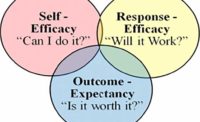But there's a problem with near-miss reporting. People don't like to do it. And so opportunities for proactive injury prevention are missed. I think there's a better way to focus preventive efforts, which I want to discuss in this article.
Why the reluctance?
But first, let's explore why it's difficult to turn near-miss experiences into valuable safety information. In a nutshell, near-misses are hard to pin down. Here's why:
- It's usually inconvenient to fill out a "near-miss investigation form." It's convenient and sometimes less stressful to just forget the near miss ever happened.
- Near-miss experiences are typically private affairs, and there's no way to hold people accountable for them. Who wants to report a personal experience that reflects at-risk behavior, inattention and carelessness, and maybe an irresponsible attitude?
- Sometimes organizational influences deter near-miss reporting. What's to be gained from filing such a report--pleasant or unpleasant consequences? Is the near-miss report considered a positive, "actively caring" attempt to improve safety and health, or an error caused by an uncaring or inattentive worker?
- Slogans like "all injuries are preventable" don't help. Employees think to themselves, "If all injuries are preventable and I almost got injured, I sure don't want anyone to think I'm so careless." Or, "If they already know enough to prevent all injuries, they don't need to know about my near miss."
Offering rewards for reporting near misses would help, but incentives could seem unfair because it's unlikely every employee has an equal chance to file a report. And a person could readily fabricate a near-miss incident to receive a reward.
A different focus
So what's the best solution for proactive safety investigations? I think the title of the latest book by Frank E. Bird, Jr. and George Germain, "The Property Damage Accident: The Neglected Part of Safety," says it all. (Loganville, Ga., Institute Publishing, Inc., 1997).The authors stress the importance of environmental assessments, in particular the need to investigate incidents resulting in property damage--but no injuries. In effect, these are near misses. And if damaged equipment or physical structures are not repaired, injuries will eventually follow. Yet the value of investigating property damage incidents is sorely overlooked.
Front-line workers know this for a fact. At workshops and seminars, I hear them talk about stockpiles of broken ladders, tools in disrepair, machine guards that don't work properly, and dents in equipment, walls, and vehicles.
Years ago in a university research project, my students and I validated the popular slogan, "litter begets litter." We showed empirically that planting litter in commercial settings led to more littering behavior. These research findings can be "generalized," to use a psychological term, to demonstrate that in the workplace, "property damage begets more property damage."
The Heinrich ratio
Heinrich proposed more than 60 years ago a 300-29-1 ratio between near-miss incidents, minor injuries, and major injuries. Ever since, safety professionals have been encouraged to investigate near-miss incidents in order to reduce minor and major injuries. Heinrich also estimated that 88 percent of all near misses and workplace injuries resulted from unsafe acts.It's interesting that the 300-30 ratio of near misses to injuries is referred to as a "law," when in fact it was only an estimate. It wasn't until more than 30 years later that this "law" was actually tested empirically. As director of engineering services for the Insurance Company of America, Frank E. Bird, Jr. analyzed 1,753,498 "accidents" reported by 297 companies. These companies employed a total of 1,750,000 employees who worked more than three-billion hours during the exposure period analyzed.
The result was a new ratio: For every 600 near misses, there will be 30 property damage incidents, 10 minor injuries, and one major injury. Now we see the critical link of property damage incidents, which were unidentified in Heinrich's estimates.
Frank Bird and George Germain point out that the 600:30:10:1 ratio was obtained from incidents reported and discussed, some during 4,000 hours of confidential interviews by trained supervisors. It's likely the base number is much larger than 600. But notice the dramatic difference between the two ratios. Suppose the number of minor injuries in Bird's ratio was multiplied by a factor of three to make it comparable to the 29 minor injuries in the Heinrich ratio. Then you would have 1,800 near misses and 90 property damage incidents per 30 minor injuries. Do you see how linking property damage to workplace injuries can encourage more incident reporting, investigation, and corrective action?
Property damage is a physical trace of an incident, and the precursor of an injury. These damages need to be investigated and repaired. Behavior that contributes to a property-damage incident is not thoughtless and careless, but failing to report such damage and make repairs shows a lack of "active caring."
Proof positive
Let me tell you a true story to illustrate how focusing on property damage can make a difference. Walking along a scaffold, a worker slipped on a metal plate and almost fell several stories to his death. Fortunately, he was able to pull himself back onto the walkway. The safety committee didn't simply blame the welder responsible for securing the plate. Instead, it looked for other contributing factors to prevent similar mishaps.Guess what was discovered?
At least a dozen people had slipped on that same loose plate and said nothing about it. They didn't want to report a near miss, implying careless or thoughtless behavior.But if the loose plate was reported as property damage needing immediate repair, the idea of individual blame would have been removed. This sets the stage for more proactive reporting, investigating, and correcting.
Focus on property damage. When your periodic environmental audits show less and less property damage, you can be assured you're preventing injuries. In fact, I'm convinced this is actually a more reliable and valid metric for safety improvement than the standard injury and illness rates derived from employees' self reports and visits to the plant infirmary. And repairing environmental damage also should be tracked as an ongoing measure of safety improvement.

